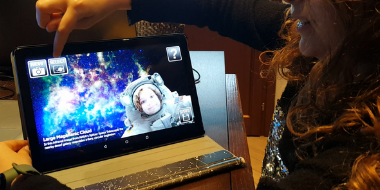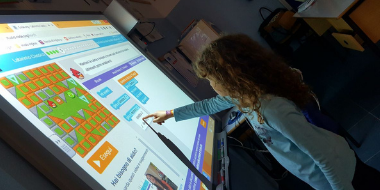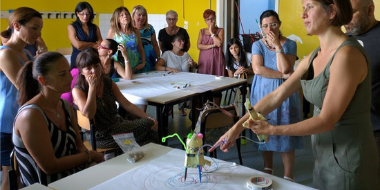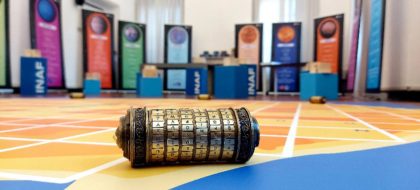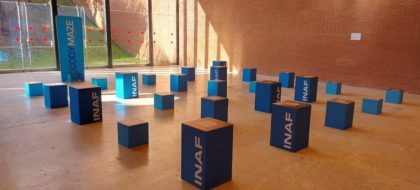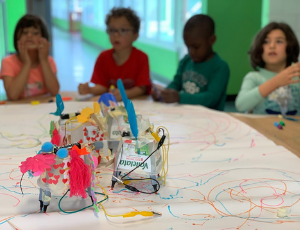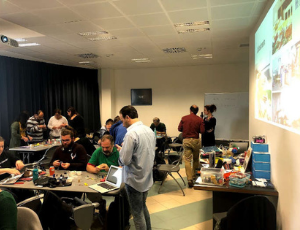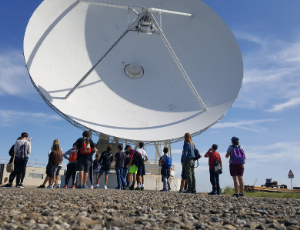Games
The game is an excellent way to encourage STEM learning. Scrolling through the list of board games available on the space theme, it is clear how interesting game based learning can be for Astrophysics learning, and how the world of gamers is fascinated by science and space. In addition to this, the mechanisms of the game solicit a series of soft skills and competences that are important to give children the essential tools for living in the 21st century. In this section we will indicate various types of resources for
Coding
Programming – coding – is a transversal discipline, based upon computational thinking. Programming is rather like having a superpower, which allows you to realize your ideas simply by giving step-by-step instructions to a programmable device (computer, robot), so that it does it for you. This superpower is not reserved to superheroes. Rather, it can be acquired by practicing coding. Within our area – Astronomy and Astrophysics, where the concepts are often not so simple – if you can program, this is a useful tool. Indeed, when you want to give
Educational Robotics
The term Robotics comes from the Czech robota, which means “hard work”. A robot is an artificial equipment, which performs certain actions according to the commands given to it. It can move under the direct human supervision, or on its own, based on general guidelines, which are “taught”. Educational robotics is a teaching approach based on the use of robots (not necessarily on their programming) and finalised to make teaching more effective and engaging for both children and teenagers. The activities we propose include also robot programming, so that they carry out
Tinkering
This section collects tinkering activities but also other hands-on resources in which you can experiment and get to know through experimentation, a sort of of tinkering with ideas. For further information, further resources and connections, you can also explore the section on educational paths. “Classic” Tinkering Macchine per scarabocchiare (it) Circuiti di carta (it) Circuiti morbidi (it) Pista delle biglie in verticale (it) Tinkering with Linght and Colors Il sole in una mano (it) Luci e colori (it) Tinkering with picture books and movies Destinazione Luna (it)
Hands-on
Laboratori hands-on Questi laboratori, portati nelle scuole e nei festival, sono stati progettati per comprendere alcuni aspetti legati alla fisica e all’astronomia e prevedono la realizzazione di un “artefatto” che rimane allo studente. A caccia di spettri (costruisci il tuo spettroscopio in 10 minuti) I tubi delle costellazioni Officina della luce Taumatropio: la meraviglia del girare Click: ombre colorate Messaggio segreto La macchina mangia colori Doppio specchio La luce e la sua magia: tre piccoli esperimenti Filtri colorati: i colori che rivelano La casetta della luce Komorebi: la luce che
Making
In this page we collected the links to various activities, which include building “something”. They can be proposed to schools, or made at home, with the help of an adult, or on one’s own. Hands-on laboratories These laboratories, brought both to schools and Science Festivals, were planned in order to understand a few details connected with both Physics and Astronomy, and foresee the realization of an “artefact”, which remains to the pupil. Hunting for spectra (build your spectroscope in 10 minutes) Let’s light up the constellations Arduino Arduino is an hardware
Augmented reality
La realtà aumentata (AR) si attiva utilizzando uno smartphone o un tablet per comunicare informazioni sempre più attraenti e interattive “aumentando” la nostra realtà e arricchirla di contenuti multimediali. Metaverse Metaverse è una piattaforma che permette di realizzare delle esperienze in realtà aumentata attivando e collegando varie scene personalizzabili. Fai un selfie al Museo Fai un selfie nello spazio C’è Posta per E.T. – l’app ufficiale del concorso Zapworks Zapworks è una piattaforma che utilizza tre differenti strumenti per realizzare delle esperienze interattive in realtà aumentata: Widgets, Designer e Studio.
Virtual Reality
La realtà virtuale (VR) permette all’utente di immergersi all’interno di un mondo generato dal computer utilizzando software grafici, potenti calcolatori e dei visori adatti, come quelli Oculus, per simulare un viaggio nel passato di un resto di supernova, poter ammirare la sua evoluzione e persino avvicinarsi alla stella, ormai esplosa, che l’ha generata. Tutte queste simulazioni che trovate in questa sezione sono virtuali ma basate su reali dati scientifici analizzati dagli astrofisici. La realtà virtuale viene incontro sia al pubblico generico sia agli specialisti sotto diversi approcci che hanno tutti
On board a photon
On board a photon is the Inaf Escape Room presented at the 2022 Science festival in Genova. It is an interactive experience, which allows you to take part in the journey of photons – light particles – from the depths of the Sun, where they start their adventure, through the planets and other celestial bodies of the Solar system, all the way to the telescopes of astronomers who, from the Earth, observe these bodies in order to study them in detail, understand how they work and take beautiful pictures of them. In line
Astrophysical Cody Maze
The Astrophysical CodyMaze is a variation of the CodyMaze – created by Alessandro Bogliolo within CodeMOOC – developed by the National Institute for Astrophysics in collaboration with the University of Urbino and Digit srl. This is a virtual labyrinth in the real world which proposes challenges of coding and a quiz about astronomy, astrophysics and space exploration. CodyMaze helps develop both computational thinking and problem-solving skills. At the same time, it allows students to revise the science programme, while having fun. Both coding puzzles and quiz are addressed to pupils starting from the junior secondary school, and adult public. Also small
Educational Path
Educational Path Here some transversal educational paths brought to schools, using our resources: Destination Moon Tinkering a distanza: reazione a catena (IT) Sperimentazioni su luce e colori (IT) #ioprogrammoacasa (IT)
Training
Teacher Training Since 2018, INAF has been providing – on the platform SOFIA of MIUR (Ministry of Education) – three training courses for teachers of both primary and junior secondary schools: i.e. a course of coding with Scratch and educational robotics, a course of tinkering, and a course of Astronomy with “making” activities. For further informations, please contact the researchers responsible for each course (name.surname@inaf.it). The coding course with Scratch and educational robotics, addressed to teachers of both primary and junior secondary schools, aims at providing knowledge and skills in order to effectively carry out a
Workshops
Workshops For several years, Inaf has been promoting, all over Italy, lessons and laboratories in the schools, as well as courses addressed to teachers about innovative teaching of STEM disciplines (Science, Technology, Engineering and Mathematics). In particular, in the school year 2018-2019 INAF has made available, on the platform SOFIA of MIUR (Italian Ministry of Education), two training courses for teachers of primary and junior secondary schools – in the province of Bologna – concerning STEM: a course on tinkering, and one on coding and educational robotics. The courses in
Summer Camps
Summer Camps Inaf contributed to plan and make two summer camps, which both took place at the Istituto Comprensivo di Ozzano dell’Emilia, in the province of Bologna, thanks to PON 2014-2020 funds and to the collaboration with the school’s digital coordinator, Gabriella d’Orsi. At the following links, you will find all the details: Digital storytelling with Scratch (PON: Social Inclusion and fight against discomfort) Estalab between coding and Sciences (PON: Computational Thinking and digital citizenship)






